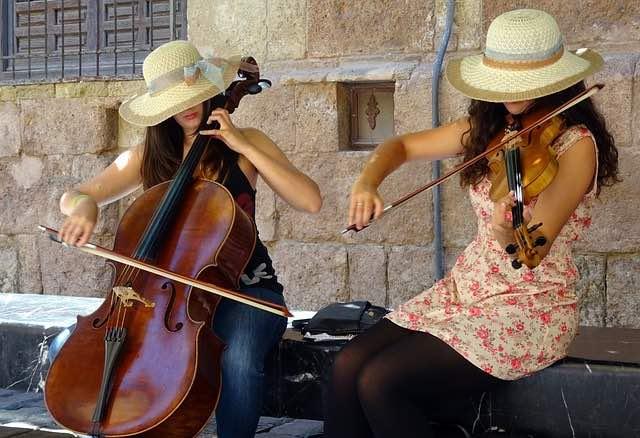At some point, your young cellist will grow out of their instrument. Growing out of an instrument is an awkward time for everyone involved and it is not something that happens suddenly. More often than not, finding that it is time to upgrade to a larger instrument is a slow realization that something is wrong in the musical force. If you can consult a professional, please do so! This decision is beneficial for the long run although it presents its own challenges upon the switch.
What Cello Sizing Factors to Be Aware Of:
Before you think about moving to a larger instrument, here are some points to be aware of so you have a good visual indicator of how a cello should fit. First, make sure they have a chair that fits them properly. We want to ensure that our cellist’s legs are at about a 90º angle or slightly less. This will help them control the movement of the cello as they are playing and give them more flexibility and freedom to move as they are playing.
Endpin Length & C Cut-Outs
Now to the actual cello part of this. Going from the bottom to the top, let’s start with the endpin. Endpin lengths vary from player to player and even depending on how tired the player is; if you watch cellists in rehearsals, the longer they have been playing the longer their endpin tends to be because they can lean back in their chairs a bit more.
Adjust the endpin so that the bottom of the C cut-outs on the backside of the cello are hitting the inner thigh right behind the knee. If the chair that your cellist is sitting in is the right height, this should be a comfortable and controllable position for them to sit in for a long time.
The Bout in Relationship to Chest
Moving up to the bout of the cello, it should hit the breast bone or the center of your cellist’s chest. This is the first indicator of whether or not the cello is the proper size or if it is time to move up. If the cello is hitting below the middle of their chest then congratulations, it is time for a new cello! On the flip side of this, if the cello is hitting too high on their breast bone then their cello may be too large.
Scroll in Relationship to Head
The last thing to check to see whether it is time to move to a different size is where the scroll is in relation to their head. Typically the bottom peg, the C peg, will be near their left ear. This placement varies a bit because of how we sit and how we move around the cello. In the case of the peg being too high above your cellist’s ear, the cello is too large.
You will notice also that if the cello is too small, their left hand will begin to feel increasingly awkward and uncomfortable. When we are playing on the proper size our arm should make a 50º angle or so from our body.
Cellos that are too small will have a smaller arm angle to the point where the arm almost touches the side of our bodies. Now, this is slightly more difficult to diagnose because cello arm position is often challenging for younger players. They are holding up their arm for long periods of time, and may not be used to this yet.
Hugging a Cello is a Good Indicator
If you suspect that their cello is getting too small for them, you can ask them to hug their cello! This is something I have tried for myself when I was younger. Have them reach their left hand over to the top right part of the C cut-out and then the same with the right hand to the left side. If your cellist is over extended, it may be time to go to another size.
What to do if Your Cellist is Between Sizes
I have personally had many students that have been in between sizes. For the sake of your student, do not go with the larger size if they are in between sizes. An instrument that is too big will cause technical problems in their playing and can cause some pain and discomfort.
Getting a new instrument is an enticing and exciting time, however it is better for them to stay on their instrument for a bit longer. Even if that means that you may need to pay for a rental for a bit longer, it is better for them to stay on the smaller instrument for a bit longer than go to a larger instrument and struggle with it.
Some other aspects to think about are their arm length and hand size. If you are unsure, definitely ask a professional that knows how to size a student.
Happy Practicing!!
Braxton Alexander Porter

